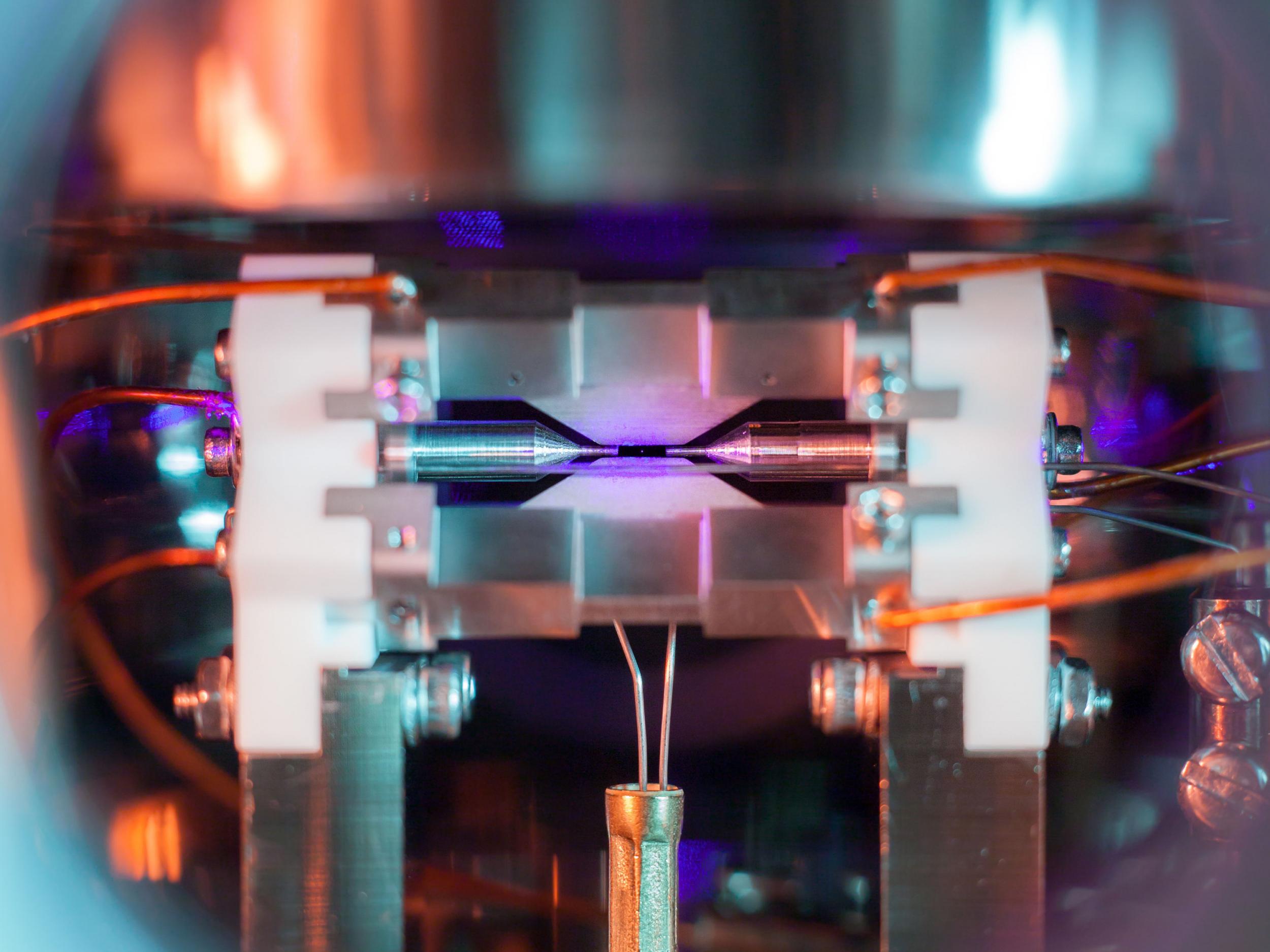Picture of single atom suspended in electric fields wins top science photography prize
David Nadlinger's photo of strontium, captured in Oxford University laboratory, handed first place in Engineering and Physical Sciences Research Council competition

Your support helps us to tell the story
From reproductive rights to climate change to Big Tech, The Independent is on the ground when the story is developing. Whether it's investigating the financials of Elon Musk's pro-Trump PAC or producing our latest documentary, 'The A Word', which shines a light on the American women fighting for reproductive rights, we know how important it is to parse out the facts from the messaging.
At such a critical moment in US history, we need reporters on the ground. Your donation allows us to keep sending journalists to speak to both sides of the story.
The Independent is trusted by Americans across the entire political spectrum. And unlike many other quality news outlets, we choose not to lock Americans out of our reporting and analysis with paywalls. We believe quality journalism should be available to everyone, paid for by those who can afford it.
Your support makes all the difference.An image of a single atom of the metal strontium suspended in electric fields has won a prestigious science photography prize.
David Nadlinger's photo, Single Atom In An Ion Tap, was captured through the window of a vacuum chamber in an Oxford University laboratory, using an ordinary digital camera on a long exposure shot.
Two metal electrodes, two millimetres apart, held the strontium almost motionless as it was illuminated with a blue-violet-coloured laser.
The image beat more than 100 entries to claim first place overall in the 2018 Engineering and Physical Sciences Research Council (EPSRC) science photography competition.
Mr Nadlinger said: “The idea of being able to see a single atom with the naked eye had struck me as a wonderfully direct and visceral bridge between the minuscule quantum world and our macroscopic reality.
“A back-of-the-envelope calculation showed the numbers to be on my side, and when I set off to the lab with camera and tripods one quiet Sunday afternoon, I was rewarded with this particular picture of a small, pale blue dot.”
Other photos which impressed the judges included an extreme close-up of a butterfly's wing captured by Bernice Akpinar from Imperial College London with an atomic force microscope, scooping her first place in the weird and wonderful category.
There was also a two-part entry from Luke Cramphorn of the University of Bristol Robotics Laboratory, featuring a robotic hand and arm taking a selfie with a selfie stick and a mobile phone, along with the selfie photograph itself.
Professor Dame Ann Dowling, the president of the Royal Academy of Engineering and one of the judges, said: “Not only do we have really strong, attractive photographs, the stories behind them about the research and why it is being done are inspiring.”
Fellow judge Professor Tom Rodden, the EPSRC's deputy chief executive, added: “Every year we are stunned by the quality and creativity of the entries into our competition and this year has been no exception.
“They show that our researchers want to tell the world about the beauty of science and engineering.”
PA
Join our commenting forum
Join thought-provoking conversations, follow other Independent readers and see their replies
Comments